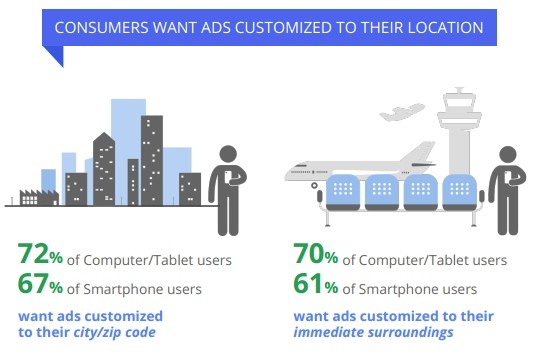
image via ThinkwithGoogle
Geo-Targeting: Tapping into the mind AND the body
Knowing your audience is more than just knowing where they are. Yes, geo-location technology can provide the basic location info you want to know, but it can also reveal deep demographic and behavioral information which can then be used for even more targeted and informed campaigns.
The ability to pinpoint your audience with geo-targeting not only ensures you’re marketing to the right set of potential customers, but it also keeps you from wasting dollars marketing to the wrong people. For example, if you’re trying to market a new health product, you might want to target yoga studios, gyms, and health food stores during morning and evening hours when those places see the most traffic. But if you’re trying to get people to try your new stuffed-crust pizza, you would want to steer clear of those places and focus more on business parks near the end of the workday when busy commuters are considering their fastest and easiest dinner options.
Want to start advertising using geo-targeting today?
Being able to fine tune your campaigns – all based on geo-location information – saves money and boosts marketing performance. In fact, according to data from the Local Search Association’s Insights Database, click-thru rates for geotarged mobile display ads were higher than industry benchmarks, regardless of the industry. The conclusion is that geo-targeting is a more effective means of reaching your target audience.
Geotargeting consists of using a person’s current geographic information to deliver content or ads. But a customer’s geo-location data can tell you more than just where they are on the planet. It can also by time of day you know to be most effective, you’re conserving ad dollars that would otherwise be wasted on an audience that would never consider your product or service.

